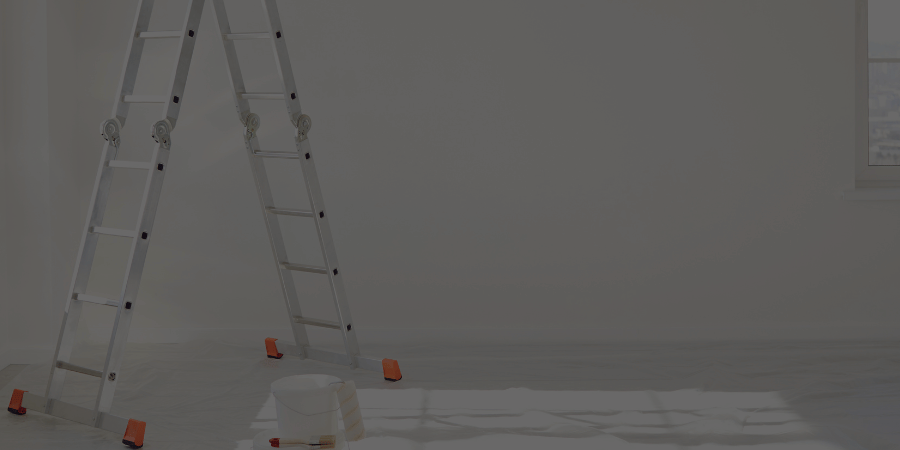Painting kitchen cabinets is an affordable way to transform your space. In this blog post, we’ll explore step-by-step instructions to achieve a professional-looking finish. Whether you’re updating tired cabinets or embarking on a DIY project, these tips will guide you.
Before diving into the details, remember that proper preparation, quality materials, and attention to detail are essential for a successful cabinet painting project.
Preparing Your Cabinets
Assessing Your Cabinets
Inspect the condition of your cabinets. Identify any repairs needed, such as loose hinges, cracks, or dents. Decide whether to remove doors and drawers for easier access. Careful inspection ensures that all issues are addressed before starting any refinishing or repainting work. Repairing damages early helps maintain the longevity and appearance of your cabinets. Removing doors and drawers can simplify the repair process and allow for a more thorough job. This approach ensures a smooth and efficient workflow, ultimately leading to better results in your cabinet renovation project.
Cleaning and Degreasing
Remove hardware, doors, and drawers. Clean surfaces thoroughly using a TSP (trisodium phosphate) solution. Sand any glossy areas to promote paint adhesion. Disassembling the cabinets makes it easier to work on each part individually. Cleaning with TSP ensures all grease and grime are removed, providing a clean surface for painting. Sanding glossy areas creates a rough texture that helps the new paint adhere better. This preparation process is crucial for achieving a smooth, long-lasting finish on your cabinets. Taking these steps ensures that the paint will bond well and look professional.
Masking and Protecting
Use masking tape to protect adjacent surfaces such as countertops and walls. Lay down drop cloths to catch drips. Masking tape helps ensure clean lines and prevents paint from accidentally getting on surfaces you want to keep clean. Drop cloths protect your floors and furniture from paint splatters and spills. These precautions help keep your workspace tidy and minimize the risk of damage during the painting process. Proper preparation with tape and drop cloths leads to a more professional and hassle-free project.
Choosing the Right Paint
Latex vs. Oil-Based Paint
Latex paint is water-soluble, easy to clean up, and has low fumes. Oil-based paint requires paint thinner for cleanup, is durable, but has strong odors. Latex paint is ideal for indoor projects due to its minimal fumes and ease of use. Oil-based paint, while more challenging to work with, offers a durable finish that is resistant to wear and tear. Choosing the right type of paint depends on your project needs and your tolerance for cleanup and odors. Both options have their benefits, with latex being more user-friendly and oil-based offering long-lasting durability.
Selecting the Color
Consider your kitchen’s overall color scheme. Test paint samples on a small area before committing. Ensuring the new paint complements your existing decor is crucial for a cohesive look. Testing samples allows you to see how the color looks in different lighting conditions and with your kitchen’s fixtures. This step helps avoid costly mistakes and ensures satisfaction with the final result. Taking the time to evaluate color choices can greatly enhance the aesthetic appeal of your kitchen.
Primer Selection
Use an adhesion-promoting primer for better paint adherence. This type of primer helps the paint bond more effectively to the surface, ensuring a durable and long-lasting finish. Applying an adhesion-promoting primer is especially important when painting over glossy or slick surfaces. It enhances the overall quality of your paint job, preventing peeling and chipping. This step is crucial for achieving a professional-looking result and maintaining the beauty of your cabinets over time.
Painting Techniques
Brush vs. Roller
Use a roller for large, flat surfaces like cabinet boxes. Use a brush for detailed areas such as edges and grooves. Rollers help cover broad areas quickly and evenly, ensuring a smooth finish on flat surfaces. Brushes are ideal for intricate details, allowing you to reach corners and create clean lines. Combining both tools ensures thorough coverage and a professional look. This approach maximizes efficiency and enhances the quality of your paint job, resulting in beautifully finished cabinets.
Applying the Paint
Follow the “5-F Rule”: Feather, Flow, Finish, Flat, and Fast. Apply thin coats to avoid drips. Sand between coats for a smooth finish. Feather your brush strokes to blend edges seamlessly. Ensure the paint flows smoothly and evenly. Aim for a high-quality finish that looks professional. Keep your brush or roller flat against the surface to prevent streaks. Work quickly to maintain a wet edge and avoid lap marks. Applying thin coats helps achieve an even application and reduces the risk of drips. Sanding between coats removes imperfections, creating a flawless, polished look. This method ensures a durable and attractive paint job on your cabinets.
Drying and Curing
Allow sufficient drying time between coats. Follow manufacturer instructions for curing. Proper drying and curing times are essential for achieving a durable and long-lasting finish. Allow each coat of paint to dry completely according to the manufacturer’s recommendations before applying the next coat. This ensures that the paint sets properly and adheres well to the surface. Following the instructions for curing is equally important to achieve the desired hardness and durability of the paint. Rushing this process can compromise the quality of your cabinet refinishing project. Taking the time to allow adequate drying and curing ensures a professional-quality finish that will last.
Choosing the Right Hardware
Knobs vs. Pulls
Knobs are small, round hardware that is easy to grasp, making them ideal for smaller cabinet doors and drawers. They provide a classic and functional touch to your cabinetry. Pulls (Handles) are longer hardware that spans the width of the cabinet. They offer a sleek appearance and are perfect for larger doors, providing ample grip and a modern aesthetic. Choosing between knobs and pulls depends on your personal preference and the style of your kitchen. Knobs are versatile and work well in traditional and contemporary settings, while pulls offer a more streamlined look and are suitable for modern and minimalist designs.
Material Selection
Metal Classic and durable, options like stainless steel, brass, or nickel offer a timeless appeal and long-lasting durability for your kitchen cabinets. Glass Elegant and versatile, glass knobs or pulls can add a touch of sophistication to both vintage and modern kitchen designs. Wood For a rustic or natural aesthetic, wooden knobs or pulls provide warmth and charm, blending well with various kitchen styles and themes. Choosing the right material for your cabinet hardware depends on the overall design and ambiance you want to create in your kitchen. Each material offers unique characteristics that can enhance the look and feel of your cabinets, so consider your preferences and the style of your kitchen when making your selection.
Placement and Consistency
Consistent Placement Ensure uniformity by placing hardware at the same height on all cabinets. This creates a cohesive and balanced look throughout your kitchen. Decide whether you want centered or off-center placement based on aesthetics and functionality. Centered placement offers a symmetrical appearance and is often preferred for a traditional look. Off-center placement can provide a more contemporary or customized feel, allowing you to highlight specific elements of your cabinetry. Consider the overall style of your kitchen and how you use your cabinets to determine the best placement option for your hardware.
Common Questions
Q1 Can I Paint Over Veneer Cabinets?
A1 Yes! Sand the veneer lightly, apply primer, and use quality paint.
Q2 How Much Does It Cost to Paint Cabinets?
A2 DIY cost: $200-$600 (supplies only) and professional cost: $400-$1,400+.
Q3 Should I Paint the Cabinet Interiors?
A3 It’s optional but recommended for a cohesive look.
The Impact of Proper Preparation
Well-prepped cabinets withstand daily wear and tear. Properly painted surfaces resist chipping and peeling. Smooth, even finishes enhance your kitchen’s appearance. Properly painted cabinets look professionally done.
Seeking Expert Advice
If unsure, consult a professional painter or home improvement expert. They can provide personalized guidance based on your specific situation.
Conclusion
Painting your cabinets is a rewarding project that can breathe new life into your kitchen. By following the steps outlined in this blog post, you’ll achieve a professional-looking finish that enhances both aesthetics and durability. Remember these key points: Properly assess, clean, and protect your cabinets before starting the painting process; attention to detail during this stage sets the foundation for success. Select the right paint type (latex or oil-based), color, and primer as quality materials make a significant difference in the final result. Whether you’re using a brush or roller, apply thin coats, sand between layers, and allow ample drying time; the “5-F Rule” (Feather, Flow, Finish, Flat, and Fast) will guide you.
Common questions are answered: Yes, you can paint over veneer cabinets, consider the cost (DIY vs. professional), and decide whether to paint the cabinet interiors. When in doubt, consult a professional painter or home improvement expert for expert advice; their expertise ensures a successful outcome.
Visit us at Pristine Luxury Remodeling
For more information and personalized guidance visit us at Pristine Luxury Remodeling, We specialize in providing exceptional remodeling services that elevate your space into a masterpiece of luxury.







